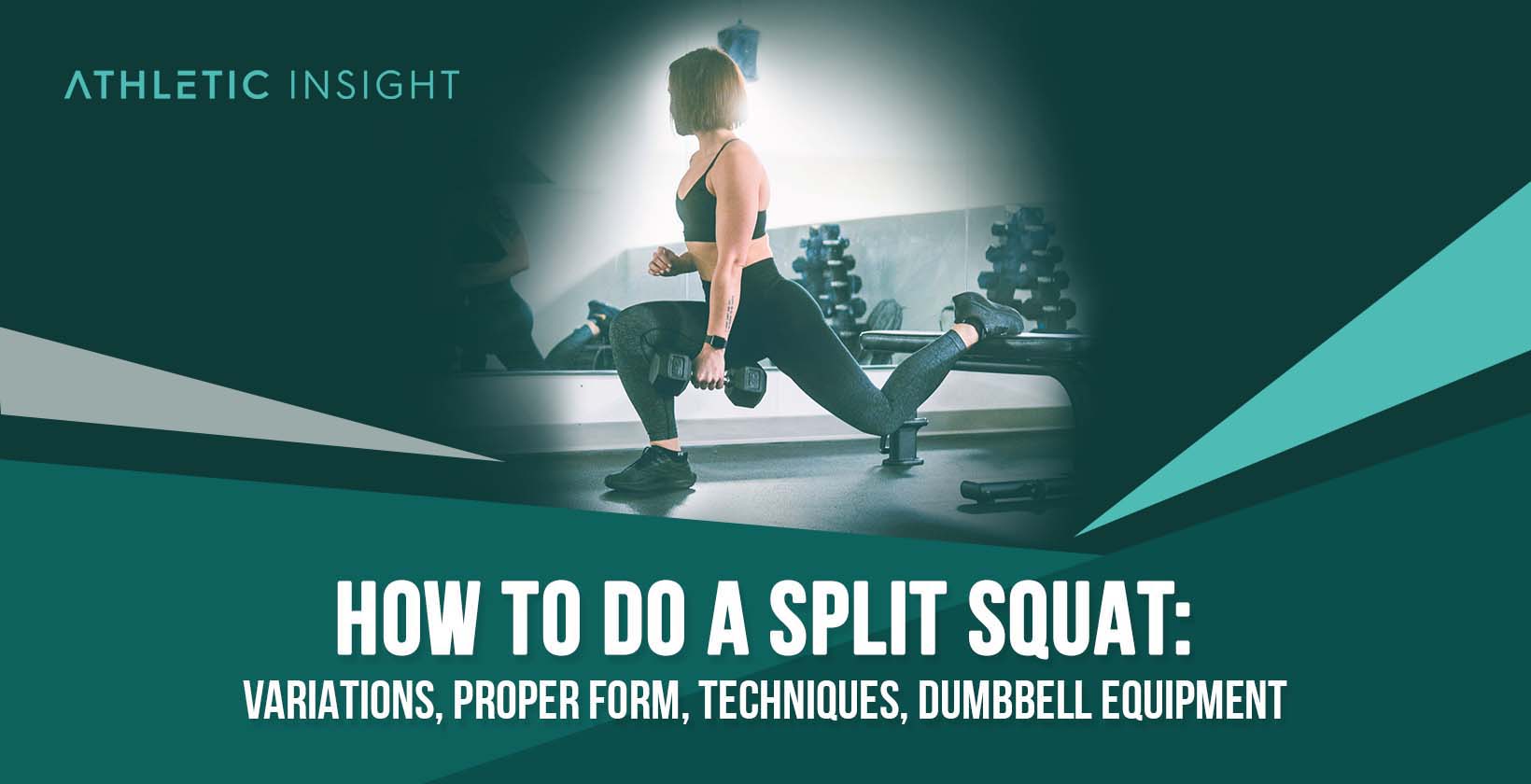The split squat is a compound leg exercise that targets the quadriceps and gluteus maximus muscles. The benefits of the split squat are posture improvement, muscular endurance and strength, core strengthening, stability, and balance, reduced risk of injury in activities that require explosiveness and jumping, and increased speed and agility.
The split squat is also known as a lunge, either forward (regular) or reverse (Reverse Lunges). Though it predominantly targets the quadriceps and glutes, it also calls for the help of the hamstrings, calves, and core to stabilize the unilateral movement.
The split squat is a great compound exercise for active individuals who want to increase leg strength and size while also reducing the risk of injuries during sports. To perform the split squat, follow these steps.
- Stand straight with feet split apart at shoulder-width. Keep your torso upright throughout the exercise.
- Lower yourself slowly by bending both legs until your back knee nearly touches the floor (or as low as you can). Make sure you do not allow your front knee to collapse inward or outward – this might cause injury to the knee joint.
- Return to starting position by pushing up with your front leg while contracting the glutes and hamstrings of your rear leg.
There are several variations and split squat techniques of split squats that we will cover in this article. However, the standard version of the exercise is the forward split squat completed with only bodyweight. Others that we will cover later are the Bulgarian split squat, the front rack split squat, and the TRX/Suspension split squat.
One should work to minimize mistakes when doing the split squat. Anything that will cause you to sacrifice your form and increase your chances of injury. One of the main mistakes when doing the split squat is knee buckling. Other common mistakes are allowing your torso to lean forward during the workout and not warming up.
These mistakes result from improper form and lead to common injuries to the knee joint as well as the thigh muscles and ligaments. The importance of proper form when performing the split squat increases awareness which prevents these types of errors as well as long-term injury.
How to Perform Split Squat with Proper Form
The proper form for the split squat is vital for increasing flexibility in the knee, toning the thighs, and building leg muscles. Here are the steps to completing a split squat with proper form.
- Take a wide step forward from a standing position, as if you are about to step into a lunge
- Lift your back foot’s heel
- Lower gently until your back knee almost touches the floor
- Push back up
- Switch to the other leg
- Repeat the movement until you find your complete balance
Proper form prominence of the split squat occurs when you feel it in your quads and glutes. The quads are getting pushed the most in this leg workout. The function of the back of your leg (hamstrings and calves) gets worked too, but it works more as a stabilizing muscle.
Also, proper form is first having your feet shoulder-width apart with your torso upright. You will maintain this throughout the entire workout. Your knees should never move in or out. Also, ensure that your knee does not come past the toes.
What Are the Benefits of the Split Squat?
It is essential to understand the benefits of doing Split Squats before you dismiss adding this exercise to your routine.
1. Address Muscular and Movement Asymmetries
Split Squats improve balance, coordination, and body control. This is due to the split squat being a single-leg exercise. The split squat forces each leg to work independently, leading to improved stability.
2. Unilateral Hypertrophy and Strength
You can do split squats by holding weights or without them. It is recommended to work up to using weights. It will take lots of leg strength to get to this stage.
3. Application to Sport and Human Movement
Split Squats may take some trial and error to accomplish. Still, once you achieve that, you will have accomplished strength and agility in the leg muscles from the power of the workout and working to balance yourself throughout the movement.
What Are the Mistakes for Split Squat Form?
The biggest mistake when doing a split squat is knee buckling. Knee buckling happens when the front knee moves inward as you push the body forward.
Knee buckling is an improper split squat form that damages the knee. The result is a pulled or injured patellar ligament or quadriceps tendon.
This negatively impacts one’s quality of life. To avoid this, use a good split squat form. Don’t push yourself too much too fast. Only perform the movement to the point that’s comfortable for you.
Another huge split squat mistake is using heavyweights instead of controlling the motion and not properly stabilizing yourself by engaging core muscles.
More common mistakes are leaning too far forward with your torso. It prevents you from maintaining an upright posture which can result in injury and slow progression of doing the workout.
Another common mistake is not warming up. It is imperative to warm up thoroughly before split squats. The warm-up is needed to heat the joints and help you achieve proper form effectively.
These mistakes can occur, whether you are doing the exercise without weights, using dumbbells, or the smith machine. The risk for injury increases as you increase your weight.
How to Determine Proper Weight for Split Squat
The best way to determine the proper weight for the split squat movement is to split squat with bodyweight proper split squat form then slowly build up the weight as your form improves.
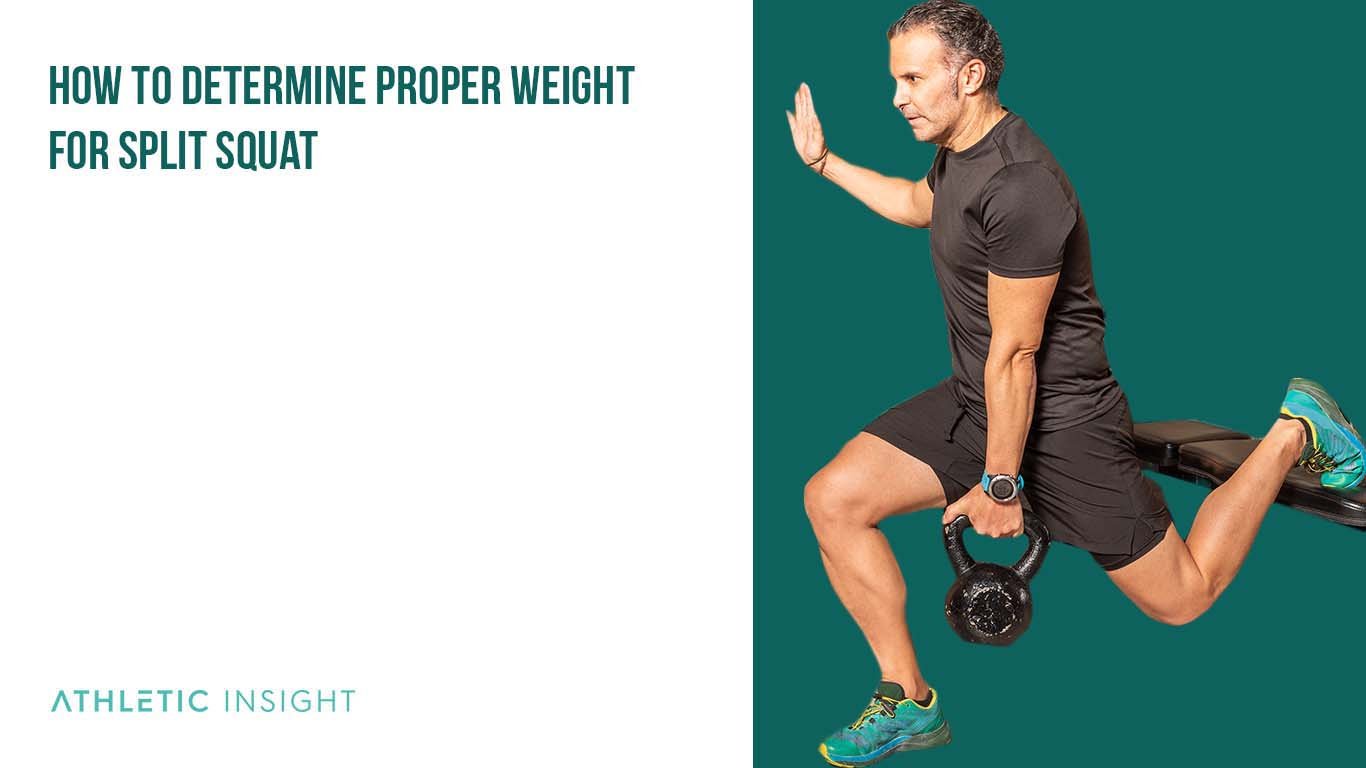
After that, progress to split squatting with a barbell on your back. You can even start using a broomstick or a PVC pipe and go down until your back knee nearly touches the floor.
Then progress to using weight until you reach your maximum split squat weight. Many believe you have acquired proper weight when you can barely complete a set of eight to 12 repetitions.
I don’t believe in that risk. If you can’t perform the movement with proper form, the weight is too heavy. Using good split squat form is vital at all times, no matter what your fitness level entails. It ensures the safety and effectiveness of the exercise.
What Is the Importance of Grip in a Split Squat?
Your grip is essential when doing the split squat movement because it will help you split squat more weight and maintain good split squat form. It is the ability to easily hold the weight equally on both sides when performing the exercise.
If you have poor grip strength, performing the split squat will feel excessively harder, which will eventually cause you to compromise your form and increase your chance of injury.
Which Muscles Are Involved While Performing Split Squats?
Let’s go into detail about each of the muscles involved in the split squat exercise.
- The quadriceps are the main muscles that benefit from this workout. They push your body up and hold it steady as you lower down
- The glutes stabilize the momentum
- The hamstrings work during the split squat by helping to stabilize your movement
- The core stabilizes your torso by forcing you to keep proper form
- The calves work alongside the hamstrings to stabilize your movement
How to Master the Split Squat
These steps will allow you to dominate the split squat with the correct form. You want to keep your upper body in a comfortable upright position during split squats. It will ensure that the movement is done properly.

1. Take a wide step forward from a standing position, as if you are about to step into a lunge
As mentioned before, it will take some trial and error to find the proper form. Before going down into the squat, do a form test by lowering your body low enough to see how far your knee goes forward. If it goes past your foot, your foot needs to move forward.
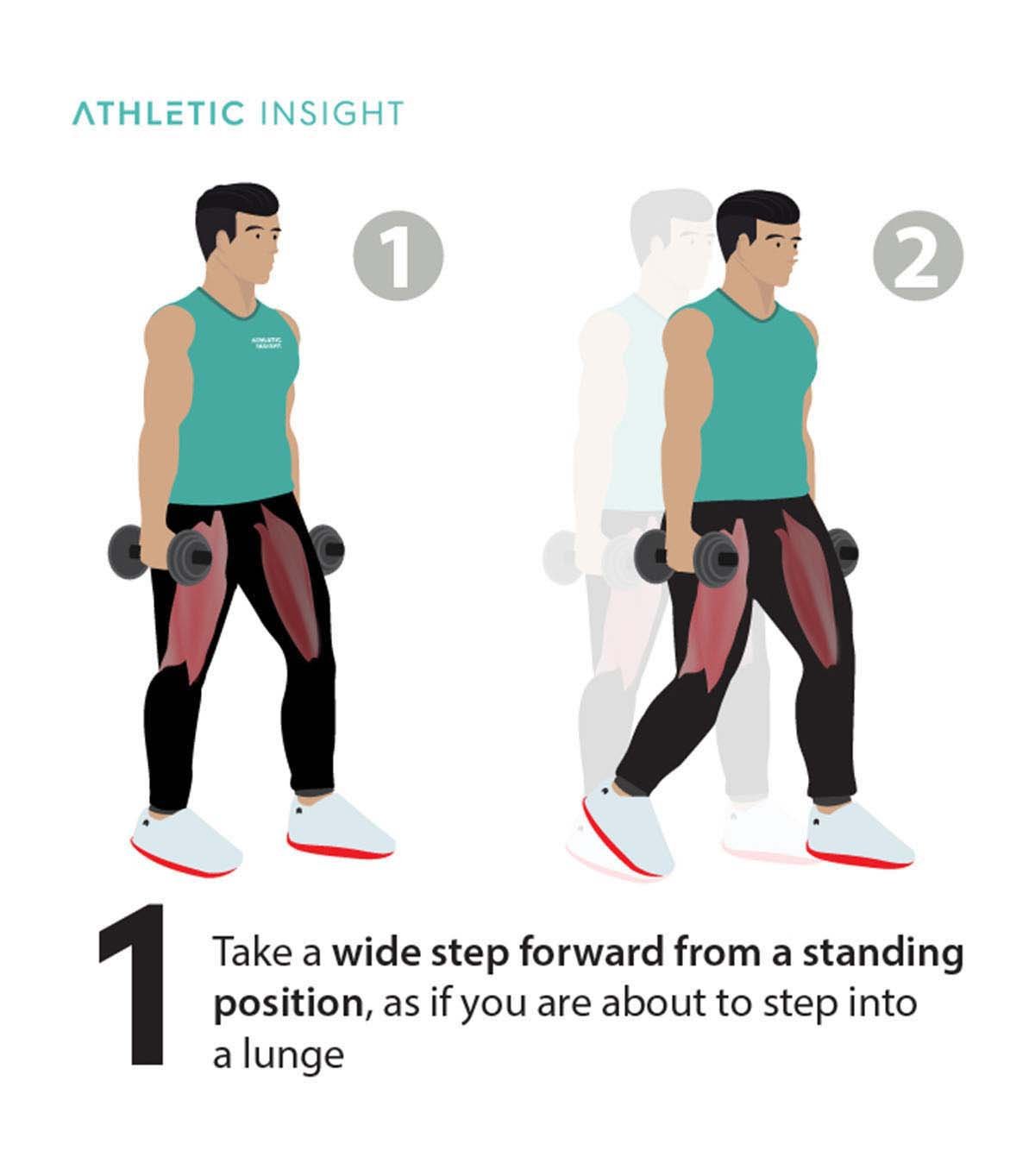
2. Lift your back foot’s heel
Take a moment to find your balance here. If you need to, feel free to hold on to a chair.
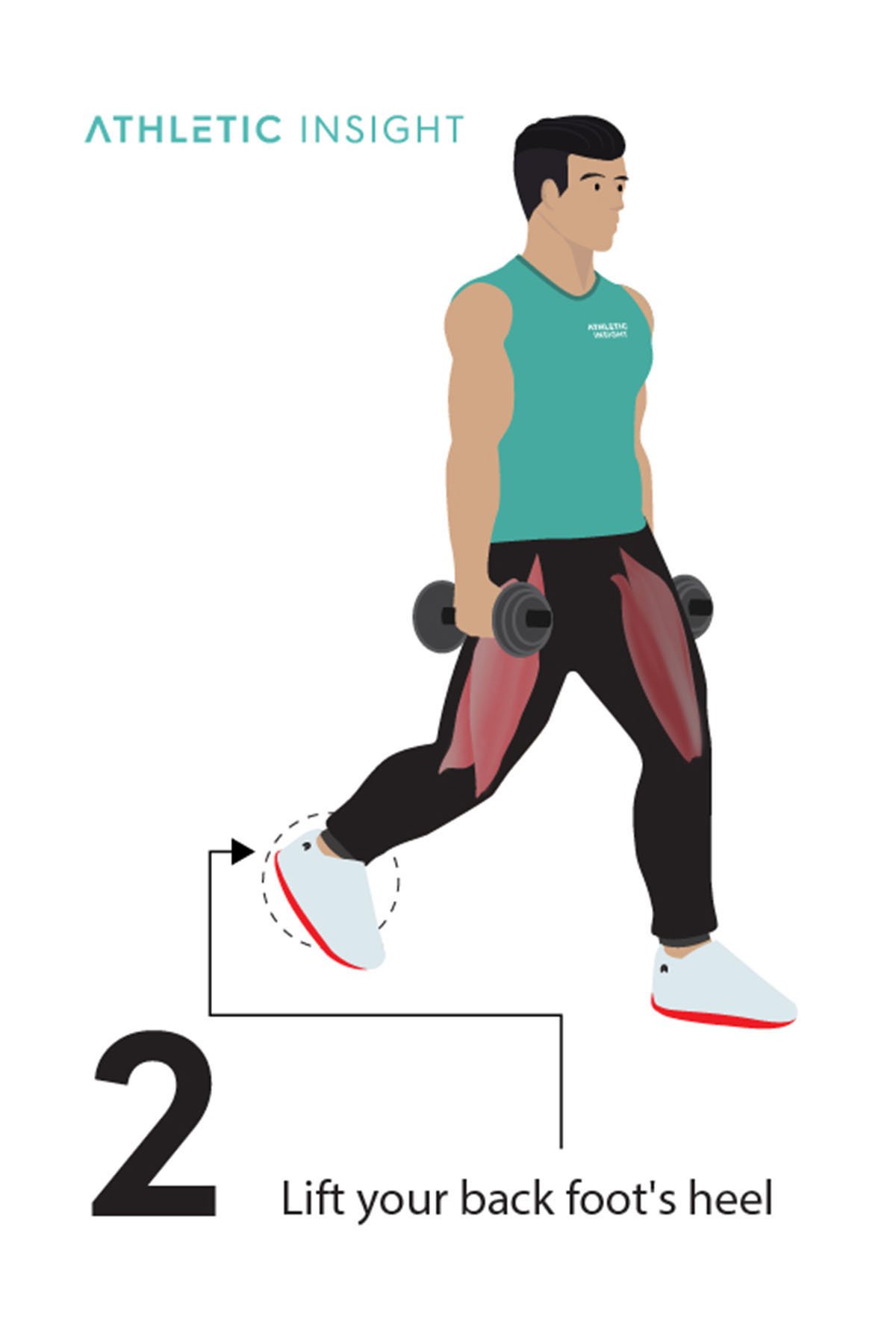
3. Lower gently until your back knee almost touches the floor
Lower slowly and gently to become aware of where you are in your ability to perform the movement. If you cannot touch the floor with your back knee, that’s ok. You will get there. Don’t push yourself too far, too fast. This is the eccentric part of the exercise.
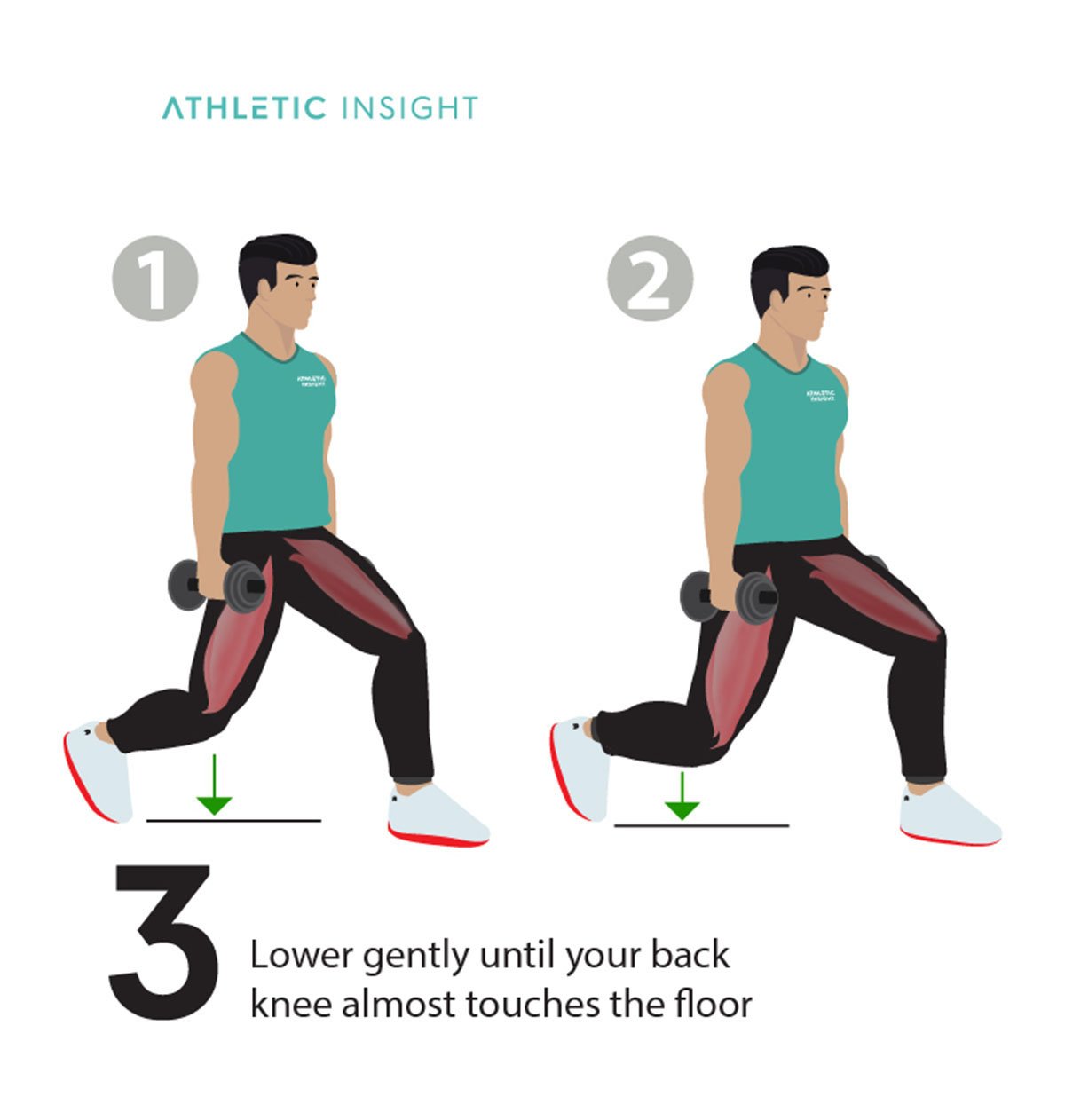
4. Push back up
Push back up slowly to maintain your form. This is the second movement of the lift, otherwise known as the concentric portion.
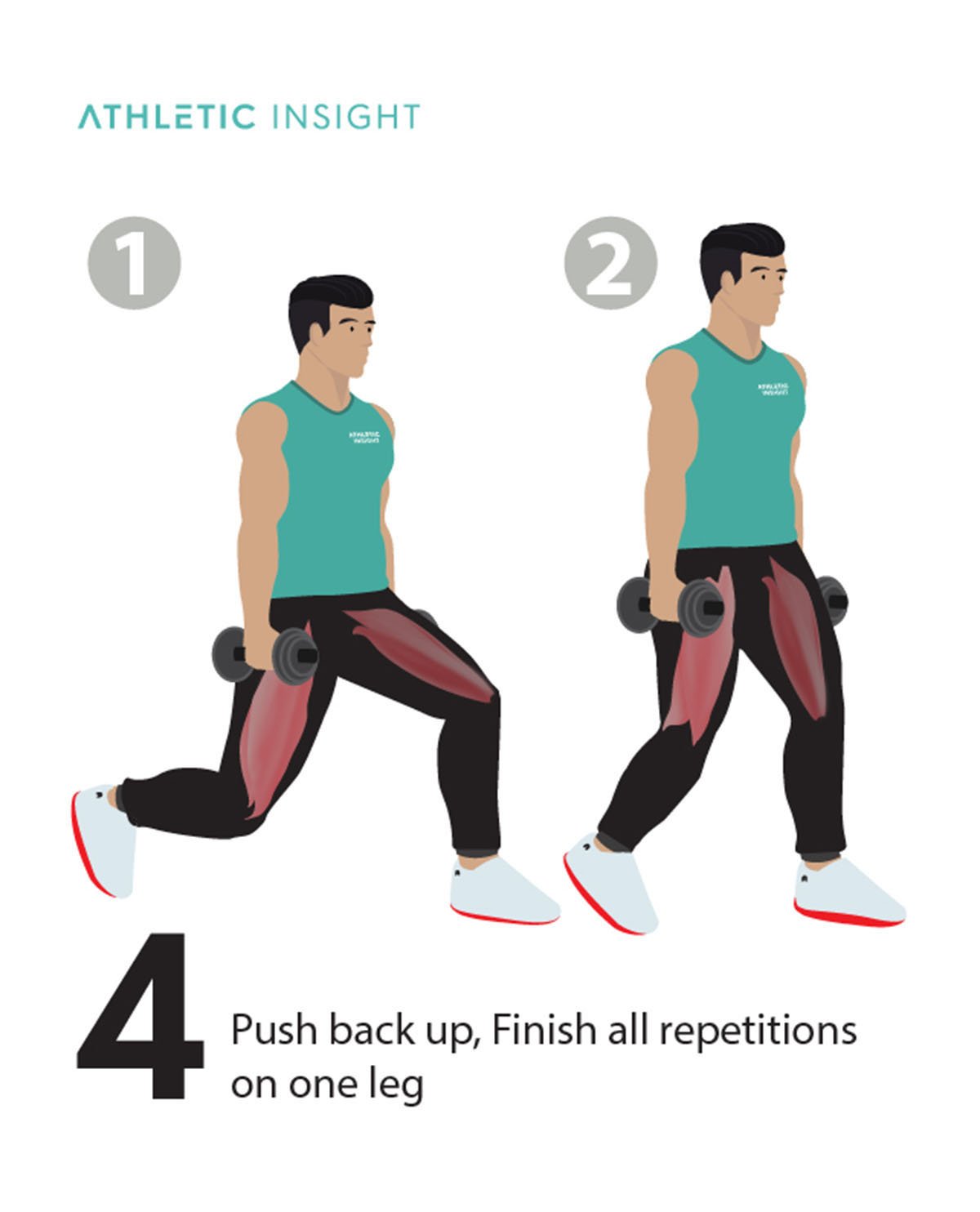
5. Switch Legs
Once you have finished the desired rep range on one leg, switch to the other leg. You can also do these one after the other opposed to doing all of the reps on one leg first.
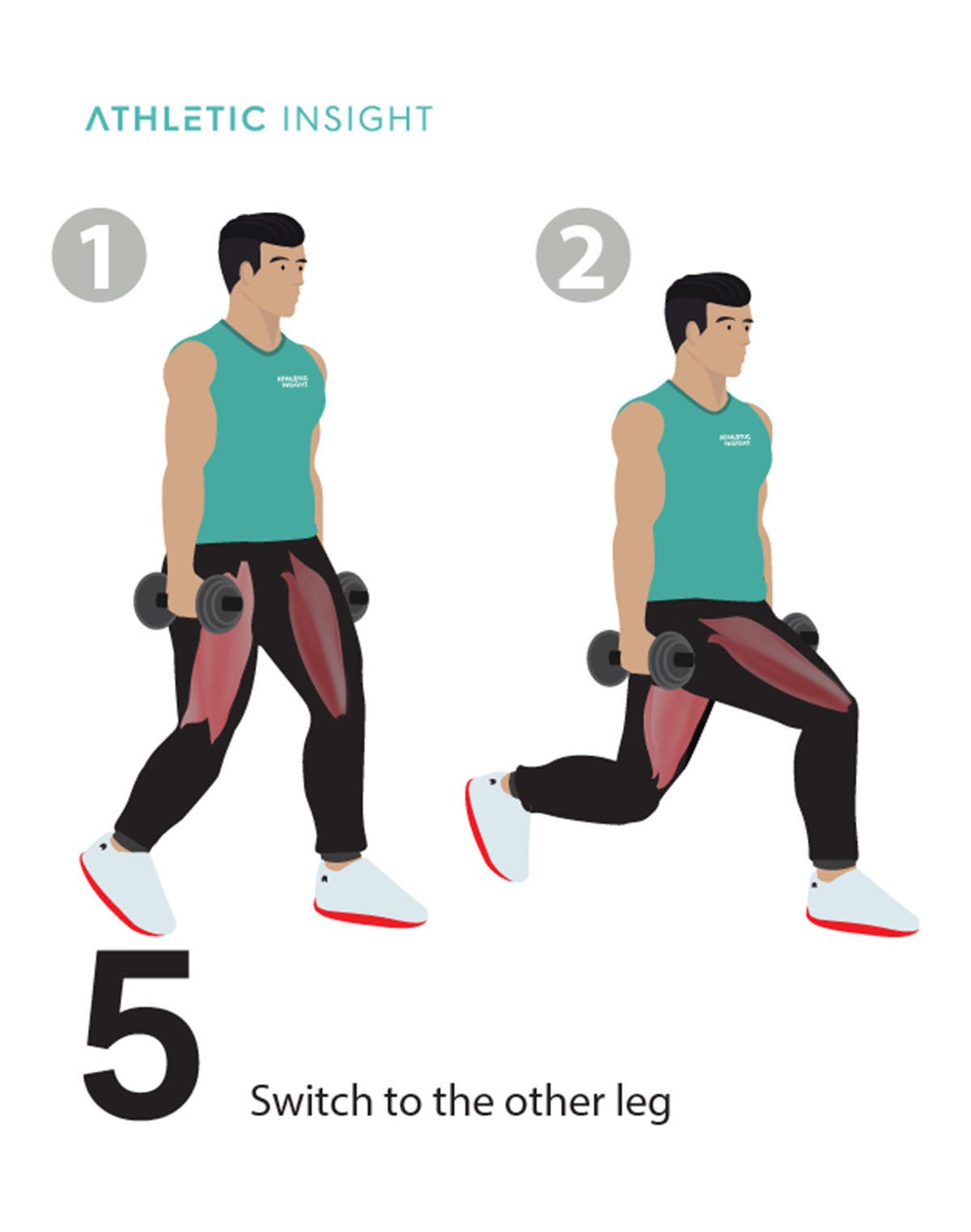
6. Repeat the movement until you find your complete balance
You can count these first few as successful reps if you’d like, but if you want to make it more difficult, only start the count once the rep is perfected.
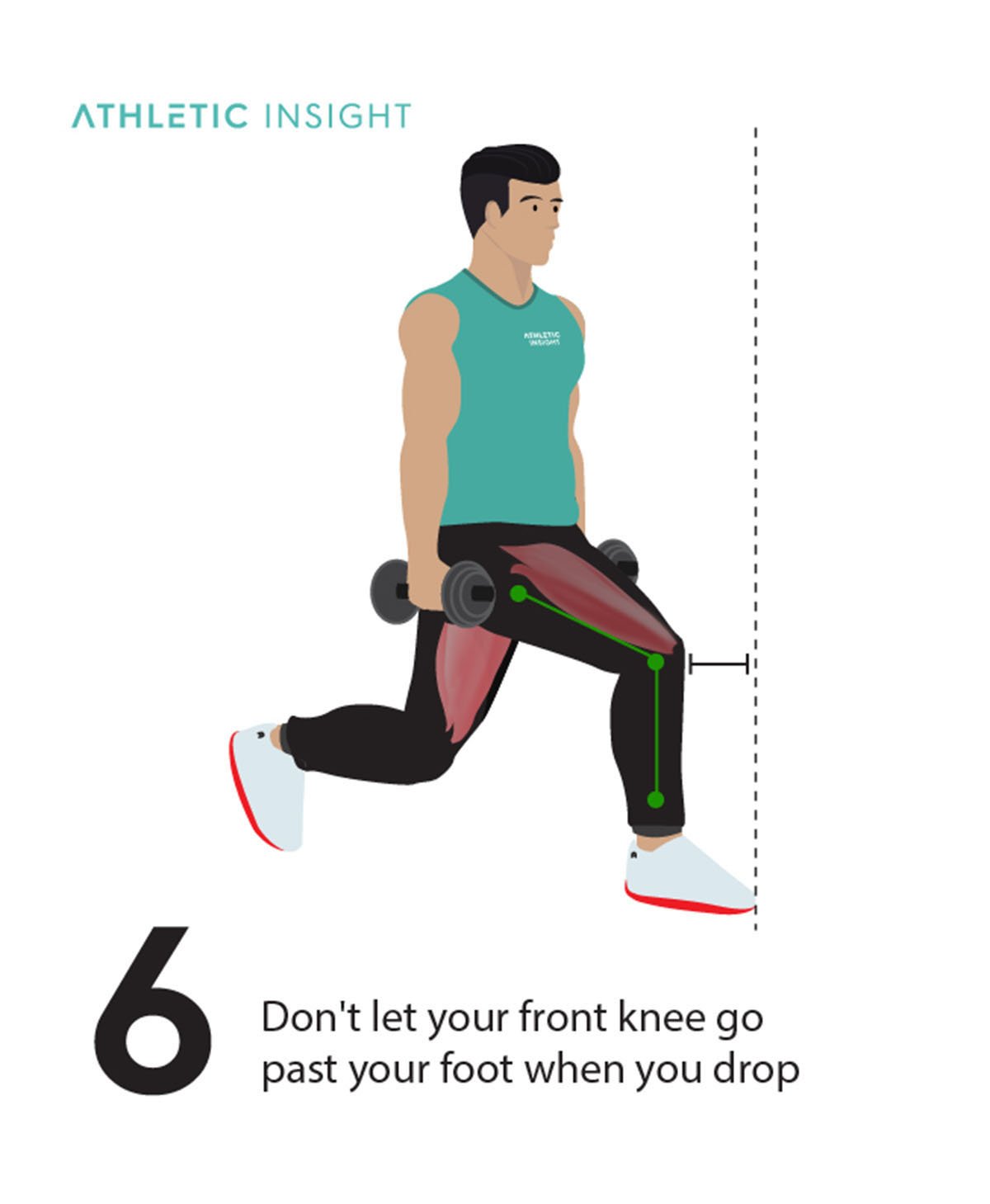
What Are the Split Squat Challenges?
Split squat challenges challenge you to progress in doing the workout with ease over time with more weight and even different variations. Here are some split squat challenges.
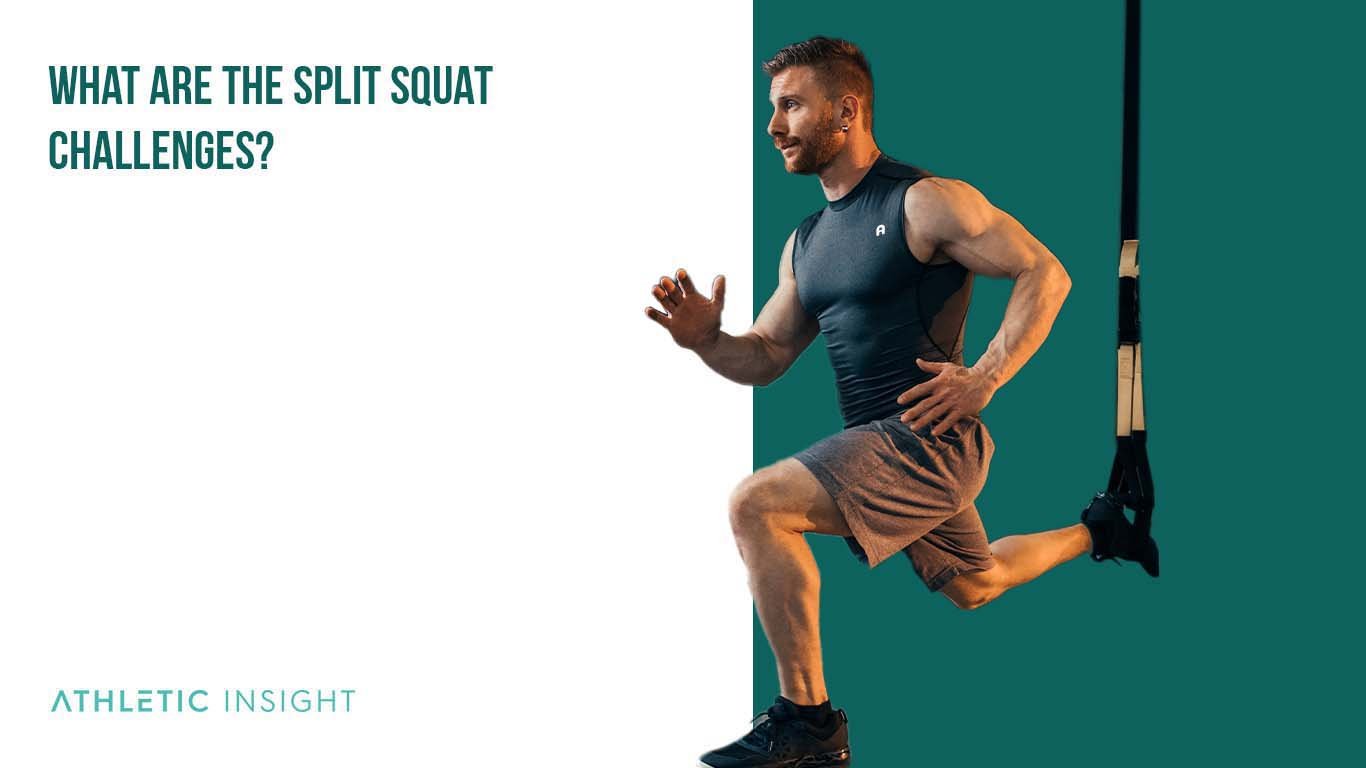
- Split Squat and EMOM: EMOM (every minute on the minute) challenges you to repeat a certain number of reps every minute.
- Split Squat and GVT: GVT (German Volume Training) is 10 sets of 10 reps with one minute in between. It’s similar to EMOM, except it wants you to take a break in between.
- Test the 1RM with Split Squat: n1RM (rep max) is the heaviest amount of weight you can lift one time with proper form.
- 100 Reps Split Squat Challenge: This challenge asks you to perform 100 split squats per day.
- 30 Days Split Squat Challenge: The 30-day challenge asks you to perform a certain amount of split squats per day with a progression of adding more reps each day.
What Are the Split Squat Variations?
Here are three great split squat variations to try at the gym or at home if you are looking to change it up a bit.
1. Bulgarian split squat
The Bulgarian split squat is variated because it calls for you to elevate your back leg on a bench or a chair. The main feature of this movement is that it enhances the focus on the quadriceps.
2. Front rack split squat
With the front rack split squat, you will be holding the barbell in the front. It forces you to tighten your core more to keep your torso from leaning forward. You get more of a core workout.
3. TRX/suspension split squat
The TRX suspension split squat uses the TRX band to add resistance to the movement. The great thing about this variation is that it also gives you support, so it helps you balance without working your core as hard.
What Are the Split Squat Alternatives?
Here are three split squat alternatives to help you work up to mastering the split squat.
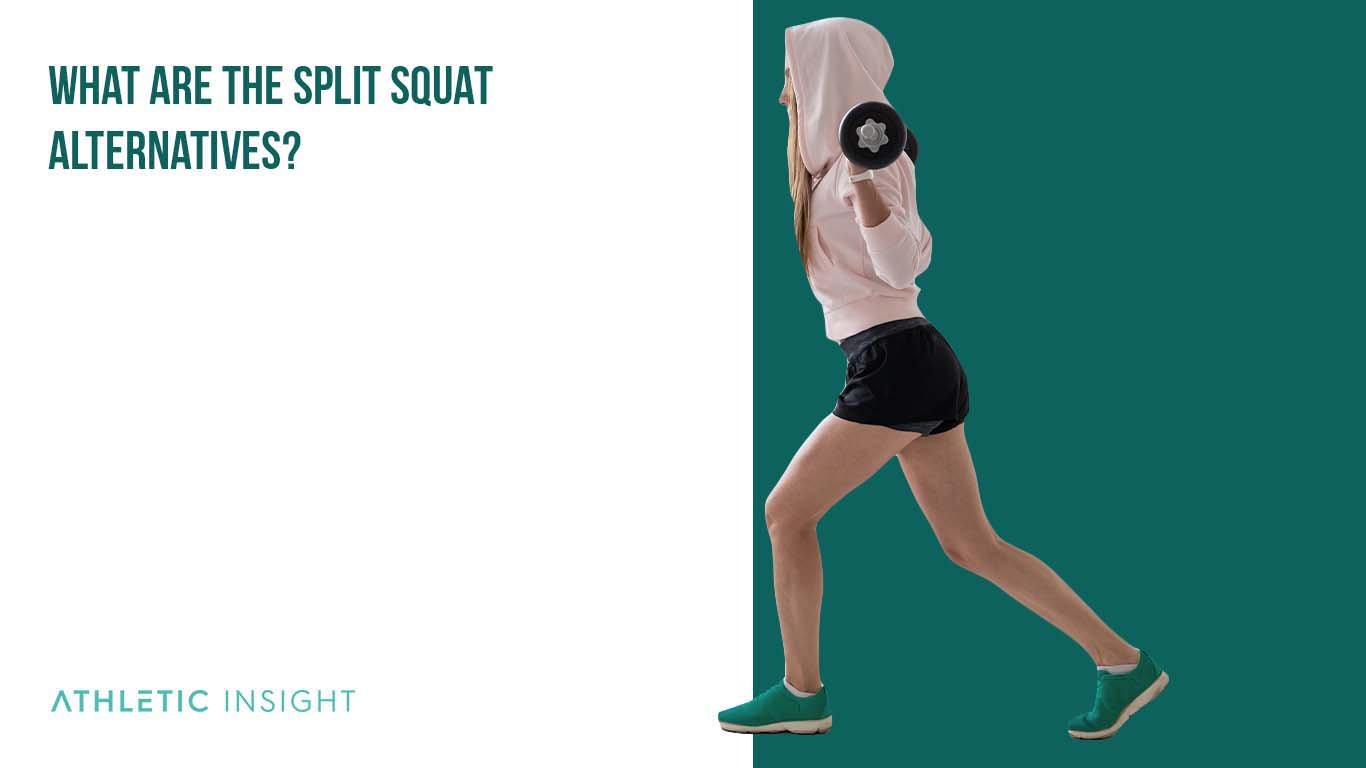
- Front-Foot-Elevated Reverse Lunge
- Walking Lunge
- Step-up
1. Front-Foot-Elevated Reverse Lunge
The front-foot-elevated reverse lunge is a leg exercise that focuses on stability in the knee. The movement is a repetitive leg workout exercise by leaning forward towards the elevated foot. It is similar to the split squat in terms of working the quads while importing stability in the knee. The front-foot-elevated split squat can be an alternative exercise for people who have knee pain. It can grow hamstrings and glutes just as much as the split squat.
2. Walking Lunge
The walking lunge is a leg exercise that focuses on strengthening the quads, hamstrings, glutes, and core. The movement is a repetitive leg workout exercise by stepping forward into a lunge. You move forward into a lunge on the opposite side as you stand up. It is similar to the split squat in terms of strengthening the quads, hamstrings, glutes, and core. The walking lunge can be an alternative exercise for people who prefer to work out with only body weight and work up to weights. It can improve balance just as much as the split squat. In terms of muscle activation, it works primarily in the quads. However, you have to use the core to maintain balance.
3. Step-Up
The step-up is a leg exercise that focuses on strength and muscle growth in the quads. The movement is a repetitive leg workout exercise by stepping up on the box and back down the floor. It is similar to the split squat in terms of building muscle mass in the quads. The step-up can be an alternative exercise for people who feel like the split squat is too hard. It can improve mobility and strength in the knees just as the split squat. The glutes stabilize the movement motion in all of these workouts. The core still works to balance the body. The hamstrings and calves work to help stabilize the movement.
What Is the Best Variation of a Split Squat?
The best variation for the split squat is the Bulgarian split squat. This workout is great for everyone from every background practicing the split squat. The elevation of the back legs helps you work harder on achieving the best balance while sinking deeper into the squat. It also reduces pressure on the ankle.
What Is the Necessary Equipment for the Split Squat?
Realistically, the split squat can be done using body weight. Therefore, there is no necessary equipment. As you progress in the workout, you can do it with dumbbells, barbells, and bands.
What Are Split Squat-Related Facts?
Here are some split squat-related facts.
- The term split squat was created by Angel Spassove in the 1980s.
- The difference between the regular and standard squat is that you are in a lunge position, which ramps up the difficulty and forces you to work on your balance.
- The split squat works the core more than any other squat variation.
These facts show that the split squat is an excellent variation for individuals wanting more out of their squats.
Does the split squat affect the hormones?
The split squat causes an increase in growth hormones and the catabolic hormone cortisol due to the release of insulin-like growth factor 1. Growth hormones are responsible for increased muscle mass and aesthetics. Catabolic cortisol increases to help your body cope with the impact of the workout. The amount released will depend on gender, amount of weight, and the number of reps.
Does the split squat increase testosterone?
Testosterone is a male hormone linked to muscle growth and strength in men. The split squat increases testosterone by stimulating the cells that produce testosterone. These cells produce more testosterone even in the evenings when testosterone levels are at their lowest.
Does the split squat affect the mood?
The split squat is a workout that impacts mood. Since it affects hormones, it can level out hormones, releasing endorphins and serotonin to relax you. Your ability to cope with stress is increased.
Is the split squat practiced within CrossFit?
The split squat is practiced within CrossFit split squat workouts. CrossFit requires individuals to be explosive and have killer balance to perform the exercises effectively without losing balance or incurring an injury. CrossFit is a sport that requires balance, stability, strength, and force.
Is split squat a military movement?
The split squat is a military movement used in the military. The military form of the workout is the safety bar split squat and hex bar deadlift. These workouts are used in combat training to build tolerance for getting hit. The trainer hits the individual in the quad ankle glute and core while performing the workout.
Is the split squat dangerous?
Split squats are dangerous because they can cause serious injury to the knee. Split squats also require your muscles and joints to be warmed up before performing the workout due to their intensity. Doing too much too fast is a surefire way to throw a wedge into your workout progression. The knee is needed for regular walking, sitting, and driving. Constant pain lowers your quality of life.
Is the split squat essential?
The split squat is essential because It is one of the best ways to build lower body and core strength simultaneously. It enhances balance and lowers your risk of injury as you age.
The split squat is an excellent exercise for building core strength and muscle mass in their legs. While it’s not the easiest exercise, it’s worth pursuing to accomplish your fitness goals.

